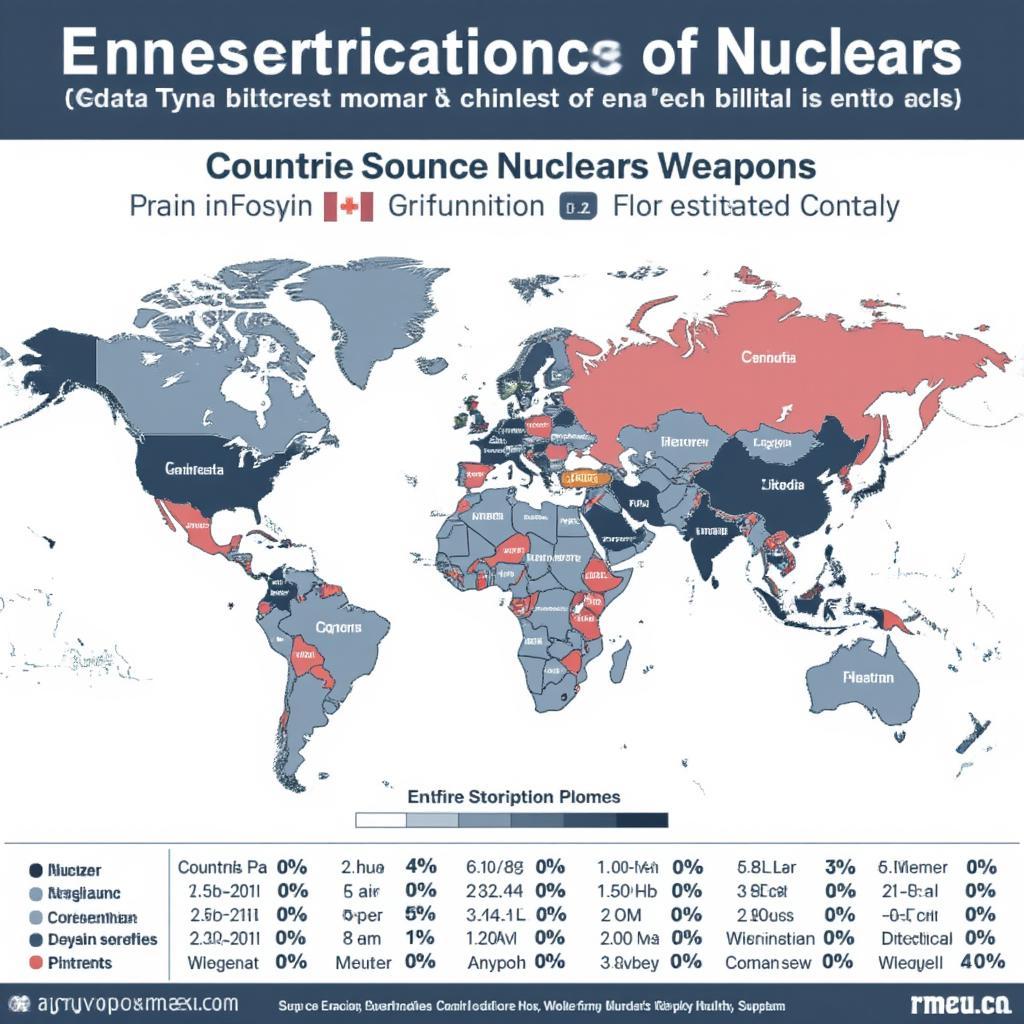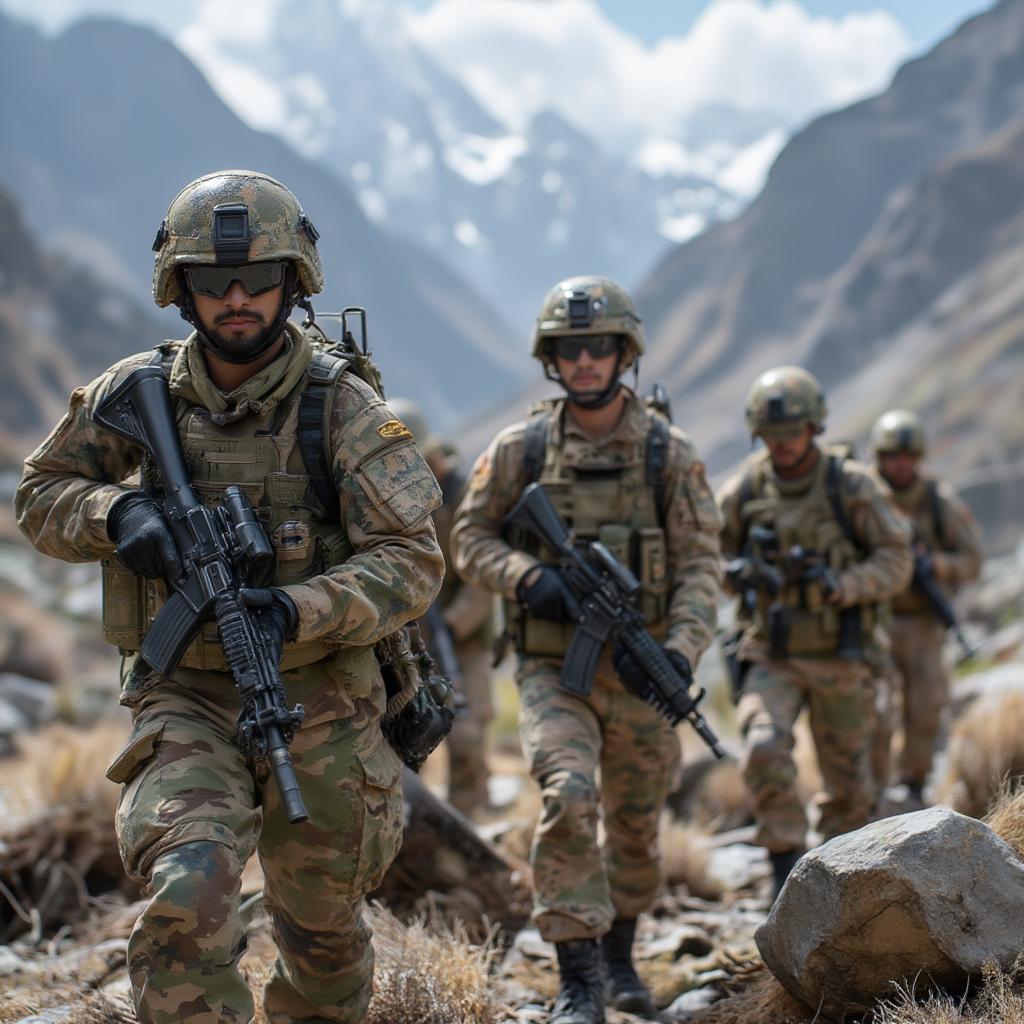The Best Military in the World: A 2023 Analysis

Determining the “Best Military In The World” is a complex question with no single definitive answer. Military strength isn’t solely about the size of an army or the number of weapons; it’s a multifaceted concept encompassing factors like technological advancement, training, leadership, budget, and geopolitical influence. This analysis delves into these key aspects to provide a comprehensive understanding of the global military landscape in 2023.
The United States consistently ranks high in discussions about global military power. Its massive defense budget, exceeding that of the next ten highest-spending countries combined, allows for significant investment in research and development, leading to cutting-edge technology like the F-35 Lightning II stealth fighter and advanced drone capabilities. Beyond hardware, the US military boasts extensive training programs and a global network of bases, enabling rapid deployment and power projection across continents.
Military Spending and Technological Superiority: Key Indicators of Power
Military expenditure is a crucial indicator of a nation’s commitment to defense and its capacity to maintain a modern, well-equipped force. The US military budget consistently surpasses all others, enabling continuous modernization and technological advancements. This financial commitment fuels research and development, resulting in superior weaponry, communication systems, and intelligence gathering capabilities. However, high spending doesn’t guarantee effectiveness, as strategic planning, troop morale, and leadership are equally vital. Russia, with its substantial nuclear arsenal and modernized conventional forces, also maintains a prominent position in global military rankings.
The Role of Nuclear Deterrence in Modern Warfare
Nuclear weapons, while controversial, play a significant role in global power dynamics. The threat of mutually assured destruction (MAD) has arguably prevented large-scale conventional conflicts between major powers for decades. Countries possessing nuclear arsenals, including the United States, Russia, China, the United Kingdom, France, India, Pakistan, Israel, and North Korea, wield immense geopolitical influence. However, the increasing focus on cyber warfare and asymmetric warfare strategies challenges the traditional reliance on nuclear deterrence.
Beyond Hardware: The Importance of Training and Personnel
While advanced weaponry is essential, a military’s effectiveness ultimately depends on the quality of its personnel. Rigorous training programs, strong leadership, and high troop morale are crucial for success in combat operations. The United States military, for example, invests heavily in training exercises and simulations to prepare its soldiers for diverse scenarios. Similarly, countries like Israel, known for its highly trained and motivated military, demonstrate the importance of human capital in achieving military success. Furthermore, adaptability and the ability to learn from past experiences are crucial for maintaining a competitive edge in an ever-evolving geopolitical landscape.
Special Forces: Elite Units and Unconventional Warfare
Special forces units, highly trained in unconventional warfare tactics, play an increasingly critical role in modern military operations. These elite units, often tasked with high-risk missions like counterterrorism, reconnaissance, and direct action, require exceptional physical and mental capabilities. Countries like the United States Navy SEALs, the British SAS, and the Russian Spetsnaz are renowned for their expertise and operational effectiveness in specialized warfare domains.
Geopolitical Influence and Alliances: Power Projection and Global Reach
Military power extends beyond a nation’s borders. The ability to project power globally, forge strong alliances, and influence international events is crucial for maintaining strategic dominance. The United States, through its network of military bases and alliances like NATO, exerts significant influence across the globe. Similarly, Russia’s military interventions in neighboring countries and China’s growing military presence in the South China Sea demonstrate the importance of geopolitical considerations in assessing military strength.
The Rising Influence of China’s Military Power
China’s rapid military modernization and expanding global ambitions have significantly altered the balance of power in recent years. Its increasing defense budget, coupled with investments in advanced technologies like hypersonic missiles and artificial intelligence, positions China as a major military player on the world stage. China’s growing naval capabilities and assertive territorial claims in the South China Sea further underscore its expanding military reach and influence.

The Future of Warfare: Cyber Warfare and Emerging Technologies
The future of warfare is rapidly evolving. Cyber warfare, utilizing digital attacks to disrupt critical infrastructure and information systems, poses a significant threat to national security. Furthermore, emerging technologies like artificial intelligence, autonomous weapons systems, and space-based capabilities are transforming the nature of conflict. Countries that effectively integrate these advancements into their military strategies will likely gain a decisive advantage in the 21st century.
In conclusion, while the United States currently holds a prominent position due to its substantial defense budget and technological advancements, the global military landscape is constantly shifting. Factors like economic growth, technological innovation, and geopolitical strategies will continue to shape the balance of power in the years to come. Determining the “best military in the world” requires a nuanced understanding of these complex and interconnected factors, as simple metrics alone cannot fully capture the multifaceted nature of military strength. The best military in the world must not only possess advanced weaponry and well-trained personnel but also adapt to emerging threats and maintain a strategic vision for the future of warfare.




